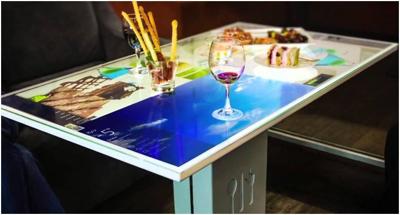To some people, it seemed like fine dining was the last analog industry left in an increasingly digital world. Things are quickly changing, however, and technology is quickly making inroads into this field. Naturally, high-tech products have already heavily taken the fast-casual market by storm.
Regardless of what segment of the foodservice industry pundits wants to examine, it certainly appears as though nothing can stop the relentless march of progress. Value-minded consumers have recently started to take further advantage of this trend, which has led to considerable savings in some instances.
Consider the example of one of the more popular e-commerce mobile apps and what it's done to the higher end of the casual dining market.
Fetching Coffee with Mobile Apps
While afternoon tea was once considered a meal unto itself by many individuals, modern people who are always on the move have broken up this tradition and divided into multiple coffee runs. An app developed by Starbucks has helped consumers peruse menus and make purchases before they even set foot in a restaurant. This helps to solve an extremely pressing problem that's become a serious issue for those in Starbucks' target demographic.
If time is of the essence, then poor service can drag everything down. Ordering food or even just a regular coffee at a restaurant can be difficult if anything gets misheard. By using an app, all of this confusion is completely eliminated since it reports exactly what menu options were pushed on a touchscreen module.
This is precisely why so many other restaurants have incorporated freestanding kiosks designed to achieve the same results in more traditional settings. Take the Poster iPad POS system, for instance. It leverages existing mobile technology to reduce reliance on traditional cash register machines. For many small business owners, this simple change can lead to a fairly drastic reduction in the amount of physical hardware they're required to invest in.
Managers who already own an iOS-based device could simply temporarily reuse their equipment as a cash register when convenient. When they need it for something else, they can simply remove the device and use it for whatever task they originally bought it for. Best of all, both of these two systems provide a way for companies to reward those who eat most often at their restaurants.
For instance, Starbucks' app offers a series of gold stars to anyone who frequently uses it. Consumers can eventually trade these in for rewards that could potentially include free meals or coffee. It seems like the fintech industry's long push for cashback programs have successfully invaded the world of foodservice.
Some pundits, however, have postulated that things are just starting to go too far. Automated restaurants, for instance, are making big waves in an otherwise crowded ocean of eateries.
Leveraging Automation to Solve Restaurant Crowing Issues
In Bengaluru, a variety of Indian, Chinese and Thai cuisine is served by actual robots. While this has attracted the attention of the press in its native India, individuals with a flair for the elegant have claimed that the service is anything but. What they've missed, however, is that automated dining is nothing new.
So-called automats, where people would buy their meals from coin slots, were popular over 100 years ago in Europe. Those who claim that high-tech dining has gone too far might not have been quite as familiar with this comparatively antique trend. In fact, automats died off in North America because the technology just wasn't there to support them.
They've flourished in Japan in the form of shokkenki as well as in the Netherlands, where they're called automatiek. It's not at all hard to believe that finer dining services will soon be offered once these stores start to make it big again on this side of the ocean.
Can High Tech Ever Equal High Fashion?
Fine dining is often in the eye of the beholder, but there's a strong possibility that technology-based models can eventually get it right. When that happens, the price of certain foodstuffs may drop considerably because of how much less this kind of technology costs to operate versus the models currently in use by businesses.


(0) comments
We welcome your comments
Log In
Post a comment as Guest
Keep it Clean. Please avoid obscene, vulgar, lewd, racist or sexually-oriented language.
PLEASE TURN OFF YOUR CAPS LOCK.
Don't Threaten. Threats of harming another person will not be tolerated.
Be Truthful. Don't knowingly lie about anyone or anything.
Be Nice. No racism, sexism or any sort of -ism that is degrading to another person.
Be Proactive. Use the 'Report' link on each comment to let us know of abusive posts.
Share with Us. We'd love to hear eyewitness accounts, the history behind an article.